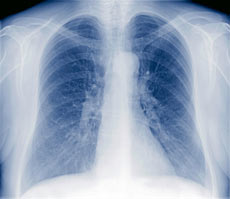First Steps on Exercising to Improve Your Lung Capacity
If you’re an ex-smoker then you know how difficult it can be to exercise after years cigarette smoking. But here’s some advice and a program to begin.
First some good news – you’ve made a life altering decision by quitting and your body is going to thank you from here on in. The bad news is that your lungs are going to take some time to repair themselves and you may feel like exercise is a struggle for awhile.
Rest assured you’ll see improvement if you’re patient and stick with a program. Here we look at how the right type of exercises can help to bring your lung capacity up to a reasonable level of strength.
In order to improve your lung capacity you need to train them just like you would any other part of your body. By improving the performance of your lungs you can improve the quality of the life you live.
The vast majority of people use only three quarters to two thirds of their lung capacity because they’ve never learned (or forgotten over time) how to deep breathe. The first thing you must do is check your posture. Bad posture can limit your lung capacity so make sure you sit up or stand up straight as nature intended.
Throw your shoulders back and lengthen your torso. This gives your lungs the room to inhale and exhale as required.
Deep breathing is breathing that comes from the abdomen and not the chest. To be more precise it comes from the diaphragm which is the muscle that’s found between your lungs and your stomach (in other words, at the base of your lungs). Focus your attention on your diaphragm. Take a deep breath and imagine you’re bringing it down into your stomach as opposed to just the entryway of your lungs.
Allow your stomach to fill up like a balloon. Now slowly exhale until all of the air you’ve breathed in has exited your lungs. Repeat this exercise five times and work up to 10 times. You must do this exercise slowly and with concentration.
You should also do it often. Not only will you build your lung capacity but you will also be filled with a peaceful and soothing feeling!
Please note the diaphragm is extremely important to the rebuilding of your lung capacity. The abdominal muscles work in tandem with the diaphragm to keep it moving and power it up for breathing purposes.
Any exercise that keeps the diaphragm busy should be included in a program to improve how the lungs work and the capacity they have for holding air. Walking and swimming are both very beneficial for the lungs. Any type of aquatic exercise can improve the efficiency of the lungs by as much as 60 percent.
Exercise that get’s you panting involuntary is actually conditioning your lungs to increase in capacity and providing it’s within your heart rate target helps both the lungs and heart. Interval exercises of a progressive nature such as the PACE 12 minute fitness revolution program makes an ideal workout program for ex-smokers. Just follow the exercises for increasing lung capacity in the program.
The lungs are not picky about the kind of exercises you engage in. Anything that gets your body moving and provides the opportunity for you to deep breathe is helpful for the lungs.
You might want to try bicycling (outdoors or on a recumbent bike indoors), using the stair climber, dancing or hiking. It’s important you start off slowly and give your body the chance to get used to the exercise program you’re doing. Overdoing it will not help you reach your goal any faster so refrain from becoming over exuberant!
Finally, if you’re struggling to quit or “fallen off the wagon” and interested in more information about Erika’s online or in-office sessions then check out her stop smoking hypnosis programs.
Becca Scott
Staff Writer
Free At Last Hypnosis


I am an ex-smoker on a mission to help others to quit smoking and help with their recovery and though the help we get from one-to one support is really helpful, i think that we quiters need to be told that we need to play a big part in the recovery of our bodies through diet and our lungs through exercise. No one told/warned me about the wierd breathing, the unexpected urges to breathe very deeply and sometimes not being able to. I figured out for myself that i had to help my lungs to relax without that filthy chemical which is added to the cigarettes to make them do so and realised that breathing exercises were the answer and as that was some long time ago when i did not have a lap-top, i devised my own through common sense but your tips are a great suport for folk and already i have told my sister to look you up as she is having problems too and as she is a recent “stopper” she is at a bad place re her breathing.
Margaret,
Thank you so much for your comments on the article. You’re an inspiration to us at Smoke Free At last. I showed your comments to our staff here. You’re so right that each of us needs to take our health in our own hands and recover both our hearts and lungs. Please keep up the advocacy work you’re doing. I look forward to hearing from you again and your help and support of others quitting.
Many thanks for sharing.
Erika Slater